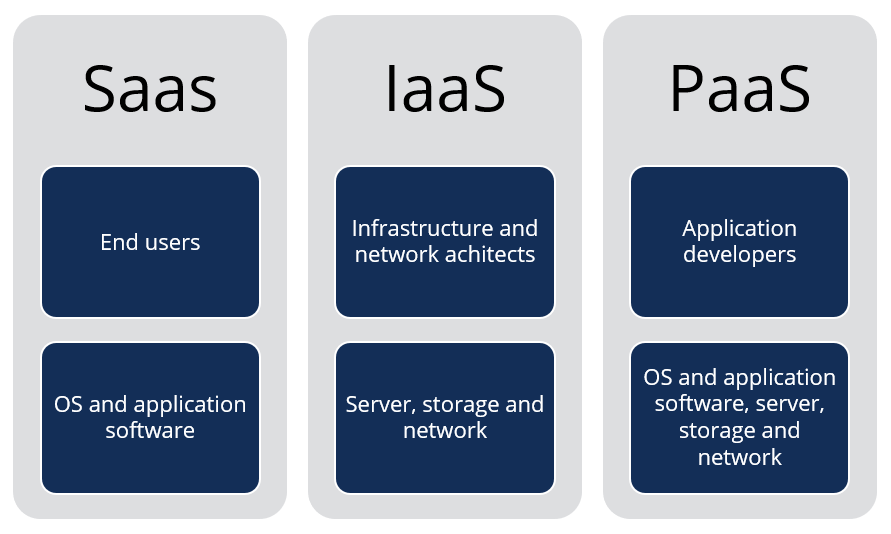Simplify Your Infrastructure With Cloud Provider
As services browse the ever-evolving landscape of innovation and information monitoring, the function of cloud solutions in streamlining framework has actually ended up being significantly prominent. How can services efficiently browse this change and absolutely open the possibility of cloud services for simplifying their infrastructure?
Benefits of Cloud Solutions
Cloud solutions offer a structured approach to handling IT infrastructure, offering companies with scalability, versatility, and cost-efficiency. One of the essential advantages of cloud solutions is the scalability they provide. Companies can quickly scale their sources up or down based upon need, ensuring they only spend for what they utilize. This versatility is especially useful for services with varying demands or those experiencing development.
Additionally, cloud solutions eliminate the need for organizations to buy expensive software and hardware. This cost-efficiency is a significant benefit, particularly for little to medium-sized enterprises seeking to reduce upfront costs. By utilizing cloud solutions, companies can access premium IT resources without the substantial price connected with typical framework configurations.
In addition, cloud services give businesses with the versatility to access their data and applications from anywhere with an internet connection. This level of accessibility boosts partnership amongst teams, makes it possible for remote work, and raises overall productivity. The versatility offered by cloud solutions equips organizations to adjust promptly to altering market problems and customer demands.
Price Cost Savings and Scalability
Along with the operational benefits highlighted previously, the assimilation of cloud services right into a company's framework generates considerable expense savings and improved scalability. Cloud services provide a pay-as-you-go model, allowing companies to range sources up or down based upon existing requirements, consequently preventing the costs connected with keeping excess capacity. This versatility enables companies to adjust quickly to changing demands without incurring unneeded expenses.
Moreover, cloud solutions remove the need for upfront investments in software and hardware, decreasing funding expenditures. General expenses are additionally minimized as firms no more need to take care of and preserve physical web servers, causing reduced power usage and IT staffing expenses. Furthermore, cloud solutions give automated updates and maintenance, making sure that the facilities remains updated and secure without needing hand-operated treatments.
Enhanced Safety Actions
Carrying out stringent security measures is vital when integrating cloud solutions right into a company's facilities to ensure and guard sensitive information compliance with sector policies. Cloud solution carriers provide boosted safety and security features such as information file encryption, firewall software protection, and multi-factor verification to minimize cybersecurity threats. Encryption assists protect information both at rest and en route, guaranteeing that only accredited customers can access sensitive information. Firewall programs act as an obstacle in between outside dangers and internal networks, surveillance and managing incoming and outgoing network traffic. Multi-factor verification includes an extra layer of security by needing individuals to provide several types of confirmation prior to accessing the cloud solutions.
In addition, routine safety audits and compliance analyses help ensure and determine vulnerabilities adherence to market criteria. Firms can additionally benefit from functions like automatic protection updates and real-time danger surveillance offered by cloud company. By prioritizing security procedures and remaining aggressive in dealing with prospective risks, companies can with confidence leverage cloud solutions while safeguarding their beneficial information from unapproved gain access to or violations.
Transitioning to Cloud Framework
To efficiently integrate cloud solutions into a firm's infrastructure, an organized approach that addresses the shift in the direction of cloud-based options is necessary. Transitioning to cloud infrastructure entails cautious planning and execution to make sure a smooth movement procedure - universal cloud Service.
As soon as the analysis is complete, a migration strategy ought to be created. This strategy must outline the timeline, resources, and responsibilities for relocating each part to the cloud. It is vital to connect this plan clearly to all stakeholders to make sure positioning and minimize disruptions throughout the change.
During the movement monitoring, testing and process are important to recognize and attend to any type of concerns without delay. Normal checkpoints ought to be established to track progression and make necessary modifications. Additionally, training for workers on making use of cloud solutions need to be provided to ensure an effective change and make the most of the advantages of the new infrastructure.
Best Practices for Cloud Fostering
Effective fostering of cloud services pivots on the tactical positioning of company goals with technical capabilities and business preparedness. To make sure a smooth transition to the cloud, organizations must begin by performing a detailed analysis of their present framework and determining which work are best suited for cloud migration. It is critical to involve essential stakeholders from various divisions in the decision-making process to acquire buy-in and deal with any type of worries at an cloud services press release early stage.
An additional best technique for cloud adoption is to prioritize protection and conformity. Organizations needs to thoroughly review the security actions provided by cloud provider and make sure that their information is safeguarded according to market criteria and governing demands. Implementing robust information encryption, accessibility controls, and regular protection audits can assist minimize dangers related to cloud adoption.

Conclusion

As services navigate the ever-evolving landscape of technology and information administration, the duty of cloud services in streamlining infrastructure has come to be increasingly prominent - linkdaddy cloud services. How can companies efficiently browse this change and genuinely unlock the capacity of cloud solutions for simplifying their framework?
Cloud services use a structured technique to handling IT infrastructure, giving organizations with scalability, cost-efficiency, and adaptability. By utilizing cloud solutions, services can access premium IT resources without the large price tag connected with typical infrastructure configurations.
To make certain a smooth change to the cloud, organizations must begin by performing a detailed analysis of their existing facilities and determining which workloads are best fit for cloud movement.